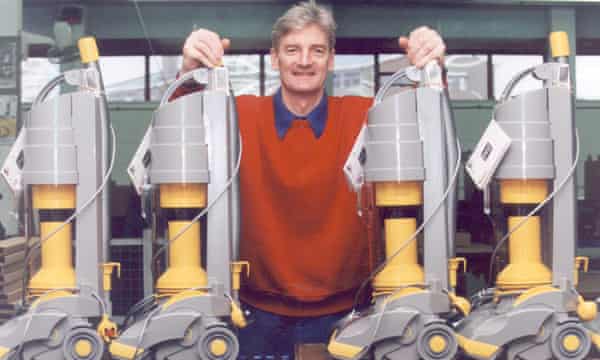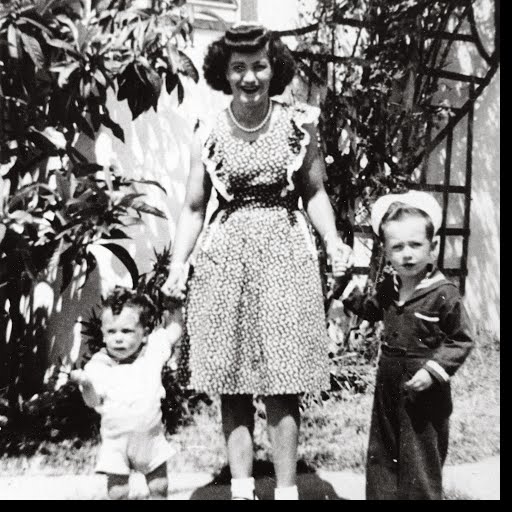
In 1978, a young man grew frustrated with the poor performance of a basic household item.
His obsessive desire to build something better would earn him billions and fundamentally disrupt an entire industry.
Who's up for a story?
👇👇👇
His obsessive desire to build something better would earn him billions and fundamentally disrupt an entire industry.
Who's up for a story?
👇👇👇

1/ James Dyson was born on May 2, 1947 in Cromer, England.
He experienced adversity at a young age, as his father died of prostate cancer before James' 10th birthday.
The young Dyson was sent to a prestigious boarding school after his father's death, where he graduated in 1965.
He experienced adversity at a young age, as his father died of prostate cancer before James' 10th birthday.
The young Dyson was sent to a prestigious boarding school after his father's death, where he graduated in 1965.

2/ Upon graduation, Dyson set out to pursue his passion for design and engineering.
He studied at the Byam School of Art before transitioning to furniture and interior design at the Royal College of Art.
But it was his first job (and boss) that would set the course of his life.
He studied at the Byam School of Art before transitioning to furniture and interior design at the Royal College of Art.
But it was his first job (and boss) that would set the course of his life.
3/ Dyson took a job at Rotork Controls, a British design and manufacturing company.
The founder of Rotork, Dyson's new boss, was a man named Jeremy Fry.
Fry was a tinkerer and innovator himself, so he took a liking to the very green Dyson, giving him unique projects to work on.
The founder of Rotork, Dyson's new boss, was a man named Jeremy Fry.
Fry was a tinkerer and innovator himself, so he took a liking to the very green Dyson, giving him unique projects to work on.

4/ At Rotork, James Dyson shined, contributing to the creation of the Sea Truck, a boat designed to deliver vehicles to land without a dock.
In 1974, he completed his first original invention. The Ballbarrow was a modified wheelbarrow, but with a small market, it never took off.
In 1974, he completed his first original invention. The Ballbarrow was a modified wheelbarrow, but with a small market, it never took off.

5/ But in 1978, Dyson had the idea that would change his life.
He had grown frustrated by the performance of his vacuum cleaner and realized the vacuum cleaner bag was the issue.
Inspired, he left Rotork with a small investment from Fry to design a bagless vacuum cleaner.
He had grown frustrated by the performance of his vacuum cleaner and realized the vacuum cleaner bag was the issue.
Inspired, he left Rotork with a small investment from Fry to design a bagless vacuum cleaner.
6/ Over the next 5 years, James Dyson built over 5,000 prototypes of his soon-to-be-revolutionary product.
He tinkered endlessly with the design, becoming completely obsessed with the idea.
By 1984, he was pleased with his creation.
But the challenges were just beginning.
He tinkered endlessly with the design, becoming completely obsessed with the idea.
By 1984, he was pleased with his creation.
But the challenges were just beginning.

7/ James Dyson had a product, but no distribution.
None of the manufacturers like Hoover or Electrolux wanted his design - the recurring sales from vacuum bags were too lucrative.
Several licensing deals fell flat.
By 1991, James Dyson decided it was time to bet on himself.
None of the manufacturers like Hoover or Electrolux wanted his design - the recurring sales from vacuum bags were too lucrative.
Several licensing deals fell flat.
By 1991, James Dyson decided it was time to bet on himself.
8/ In a risky maneuver, but one that would allow him to control his own destiny, he put his home up as collateral and took out a $900K loan.
With the funds in hand, he established Dyson Appliances, Ltd. and took control of the manufacturing and sales processes for his product.
With the funds in hand, he established Dyson Appliances, Ltd. and took control of the manufacturing and sales processes for his product.
9/ In a famous set of TV ads, Dyson used the slogan, "Say goodbye to the bag!"
The slogan was a smash success.
Sales of his product skyrocketed, with the Dyson Dual Cyclone becoming the fastest selling vacuum cleaner ever in the UK.
For Dyson, this was just the beginning.
The slogan was a smash success.
Sales of his product skyrocketed, with the Dyson Dual Cyclone becoming the fastest selling vacuum cleaner ever in the UK.
For Dyson, this was just the beginning.

10/ He struck attractive licensing deals before going direct into large new markets like the US.
With a great product and rapidly improving distribution, Dyson took over the world.
By 2001, the Dyson Dual Cyclone held ~50% of the upright vacuum cleaner market globally.
With a great product and rapidly improving distribution, Dyson took over the world.
By 2001, the Dyson Dual Cyclone held ~50% of the upright vacuum cleaner market globally.
11/ As the company advanced, Dyson demanded it maintain a culture of innovation.
The company continued to innovate over the years, expanding well beyond vacuum cleaners into a variety of other product categories.
The obsessive, tinkerer mentality of James Dyson is in its DNA.
The company continued to innovate over the years, expanding well beyond vacuum cleaners into a variety of other product categories.
The obsessive, tinkerer mentality of James Dyson is in its DNA.
12/ Today, Dyson Ltd. has annual revenues of ~$6 billion and generates annual net profits of ~$1.5 billion.
It is still a private company and is owned by Sir James Dyson, who @Forbes estimates has a net worth of ~$6.6 billion.
From Ballbarrow to Billionaire!
It is still a private company and is owned by Sir James Dyson, who @Forbes estimates has a net worth of ~$6.6 billion.
From Ballbarrow to Billionaire!

13/ James Dyson was knighted in 2006 by Prince Charles, formally becoming Sir James Dyson.
He established the James Dyson Foundation in 2002, focusing his giving on supporting design and engineering education initiatives.
He remains an active, obsessive tinkerer to this day.
He established the James Dyson Foundation in 2002, focusing his giving on supporting design and engineering education initiatives.
He remains an active, obsessive tinkerer to this day.

14/ The story of Sir James Dyson is an inspiring one. He bet big on himself, and achieved remarkable success.
If you enjoyed this story, you can find more on it at the links below.
inc.com/magazine/20120…
If you enjoyed this story, you can find more on it at the links below.
inc.com/magazine/20120…
15/ I would also recommend the fantastic @HowIBuiltThis episode with @GuyRaz, which gets into this story in great detail with Sir James Dyson himself.
Special thank you to my friend @10kdiver for sending it to me!
podcasts.apple.com/us/podcast/dys…
Special thank you to my friend @10kdiver for sending it to me!
podcasts.apple.com/us/podcast/dys…
16/ And for more educational threads on business, money, finance, and economics, check out my meta-thread below. Turn on post notifications so you never miss a thread!
https://twitter.com/SahilBloom/status/1284583099775324161
• • •
Missing some Tweet in this thread? You can try to
force a refresh












